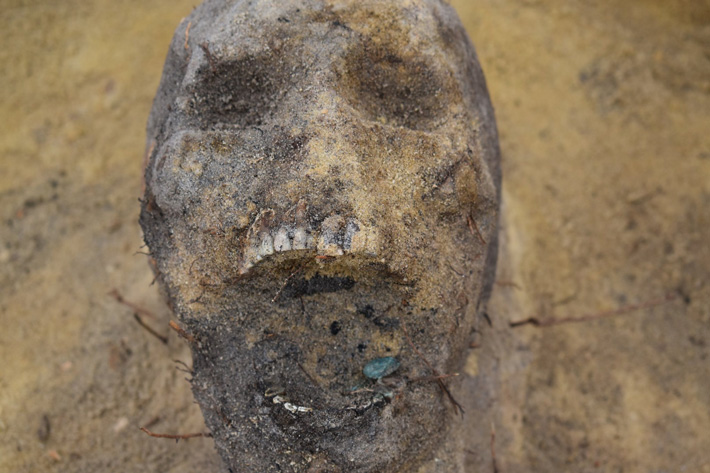Mass 16th-century grave reveals grim remains of over 100 children with coins in their mouths
In Southeast Poland the bodies of more than 100 children were found, some with coins in their mouths. It verified the local legends of the child’s graveyard.
Archeologists revealed a total of 115 bodies following the discovery of human bones by construction workers during work on the S19 road in Jeżowe, Nizko in Podkarpackie province.
As reported, the National Roads and Motorways Directorate-General said: ‘ Around 70 – 80% of all burial sites, based on archeological discoveries to date, are infants.

When archaeologists looked more closely at the bodies they were amazed to find some of them had coins placed in their mouths.
Katarzyna Oleszek, an archaeologist working at the site, said: “It’s certainly a sign of their beliefs. The coins are called obols of the dead or Charon’s obol. It is an old, pre-Christian tradition. But it’s been cultivated for a long time, even as late as the nineteenth century, it was practiced by Pope Pius IX.”
Charon’s obol is a term for a coin placed in the mouth of a dead person before burial. The tradition goes back to ancient Greece and Rome. The coin was a payment or bribe for Charon, the ferryman who conveyed souls across the river that divided the world of the living from the world of the dead.
The bodies found in Jeżowe do not date that far back, however. The coins found were minted in the time of Sigismund III Vasa, who was the king of Poland from 1587 to 1632. Also found were coins known as boratynki, which date from the reign of John II Casimir from 1648 to 1668.
The find confirms archaeologists’ theories and the speculations of locals that children were buried in a cemetery in an area known as the Church Mountains.
Apart from the coins, no other items were found in the graves. There were no buttons, nails, or coffin handles, which Oleszek says suggests that the community that buried them was very poor.
The area is now forested and there are no grave markers. Only a small chapel offers any sign of the former church.

Oleszek said, “We know from sources that during a visit of the bishops of Kraków here in Jeżowe 1604 there was already a large parish church, with a garden, a rectory, a school, and a cemetery. It probably existed already since 1590.”
The bodies were found in sandy ground and were arranged on an east-west axis, all with heads to the west on their backs with the hands at their sides. The graves are most likely those from the children’s section of the graveyard.
One grave contains the bodies of four children. They lay in close formation but not on top of each other. All their heads are resting to one side in the same direction. The fourth child, on the edge of the group, is much younger than the others.
“The arrangement of the skeletons, the state of their preservation, shows that the discovery is a Catholic church cemetery, which was certainly taken care of. No grave is damaged by another. The inhabitants knew exactly where they had graves and took care of them,” said Oleszek.
The bodies will be exhumed and after being studied by anthropologists they will be passed to the local parish church and buried again in the local cemetery.
Most of the bodies were buried in individual graves and the original order and layout of the graves will be preserved. The group of four children will again be buried together.
The bodies were discovered during work on a section of the S19 motorway, which is part of the Via Carpatia project that will link the Baltic states with south-eastern Europe.
In Poland, the route runs through Podlasie, Mazovia, Lublin, and Podkarpacie and is set to be over 700 km long.
